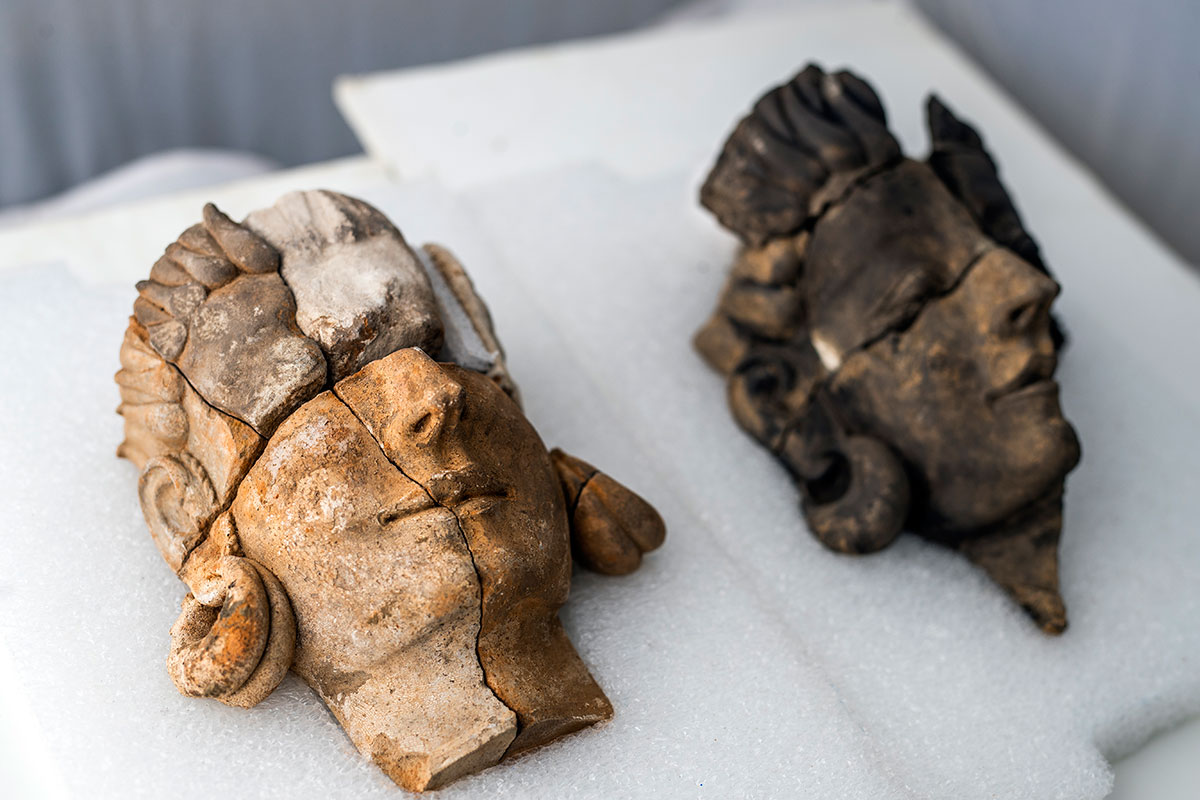Excavations by the Arqueología de Mérida (IAM-CSIC) at the site of Casas del Turuñuelo (Badajoz, Spain) have brought to light the remains of five figural reliefs, partly fragmentary, from the 5th century BC.
These are the first ones belonging to the Tartessian culture (8th-4th centuries BC). The discovery was made during the excavation of the eastern sector of the site, the area leading to the courtyard of the building where a mass sacrifice of animals, mainly horses, was documented. The unusual thing about the new find is that the representations correspond to human faces.
The team from the Institute of Archaeology, a joint centre of the Consejo Superior de Investigaciones Científicas (CSIC) and the Junta de Extremadura, led by Esther Rodríguez González and Sebastián Celestino Pérez, confirmed this week at a press conference that two of the figural reliefs are almost complete and correspond to two female figures adorned with large earrings typical of Tartessian goldsmithery.
Until now, similar gold earrings were known from sites such as the Cancho Roano or as part of the Aliseda Treasure, a Tartessian funeral trousseau found in Cáceres. Given the technical quality and the artistic detail with which they were made, it seems that we are dealing with the representation of two female divinities from the Tartessian pantheon. However, researchers do not rule out the possibility that they are prominent figures from Tartessian society.
Along with the two female figures, other fragments of reliefs have been recovered. These belong to at least three other individuals, one of them identified as a warrior due to the part of a helmet preserved.
This extraordinary find represents a paradigm shift in the interpretation of Tartessus, traditionally considered an aniconic culture because it represented divinity through animal or plant motifs, or through betilos (sacred stones). Thus the discovery further emphasises both the importance of the site and the significant role of the Tartessian culture in the Guadiana valley during its last moments.



